If the previous cycle saw MicroStrategy ignite the bull market for Bitcoin, then the engine of the current market is undoubtedly the 'altcoin micro strategy'. Treasury companies like SBET and BMNR continued to buy, driving ETH's price from $1,800 in early May to $4,700, an increase of over 160%, while also playing a new leading role in market sentiment. At the same time, mainstream altcoins like SOL, BNB, and HYPE have followed suit, producing a batch of companies with narratives centered on treasury holdings, further amplifying market's bullish expectations.
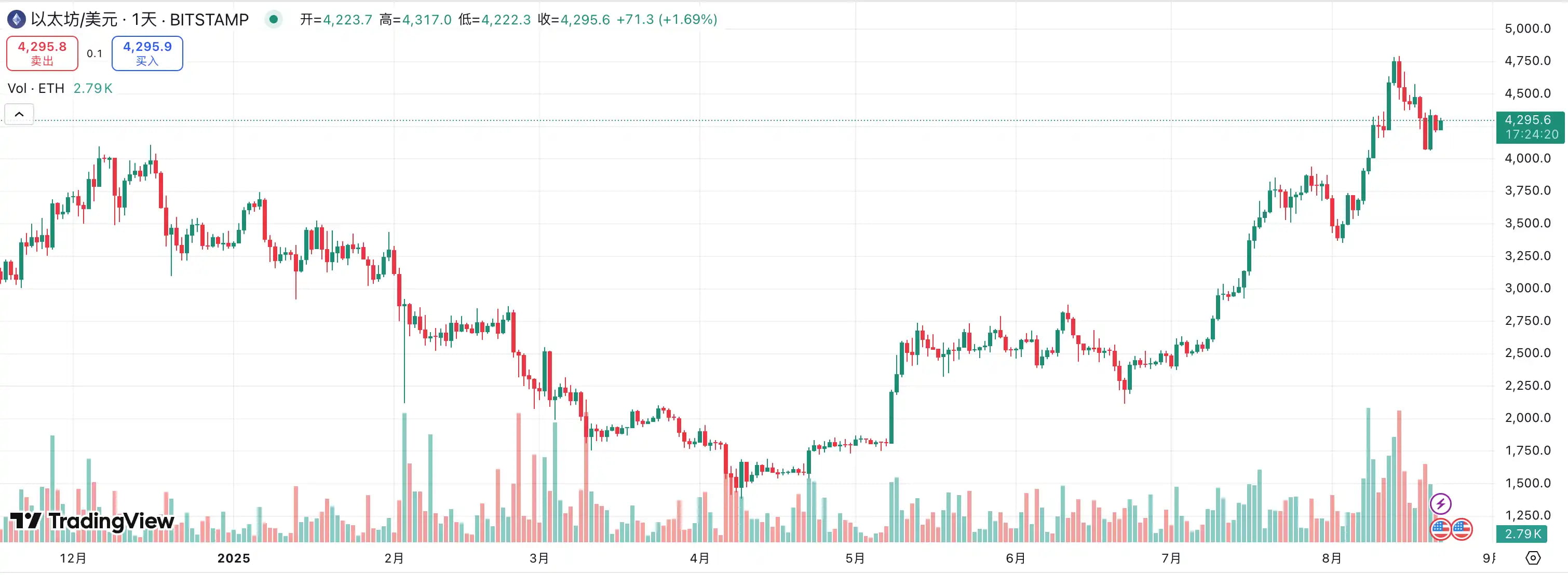
However, as this model spreads, risk signals are gradually emerging. Recently, the BNB treasury company Wint is facing delisting risks, and Hype treasury company LGHL has been rumored to be involved in a token sale crisis, raising market doubts about the sustainability of the 'treasury strategy'. What potential risks are hidden in this centralized buying approach? While chasing high returns, what hidden dangers should investors be aware of? This article will conduct an in-depth analysis.
Company competition: Capital will only choose a few winners.
The competition among 'treasury companies' is a brutal market elimination contest.
Windtree Therapeutics (WINT) announced in July that it would establish a BNB strategic reserve, but due to weak fundamentals and a continuously depressed stock price, it ultimately received a delisting notice from Nasdaq on August 19. Following the announcement, WINT's stock price plummeted, crashing 77.21% in a single day, with the current price only $0.13, a cumulative drop of 91.7% from $1.58 after the announcement. For a small biopharmaceutical company that is already at the clinical stage and has not yet commercialized, with quarterly losses continuously expanding, delisting almost means being completely marginalized by the market.
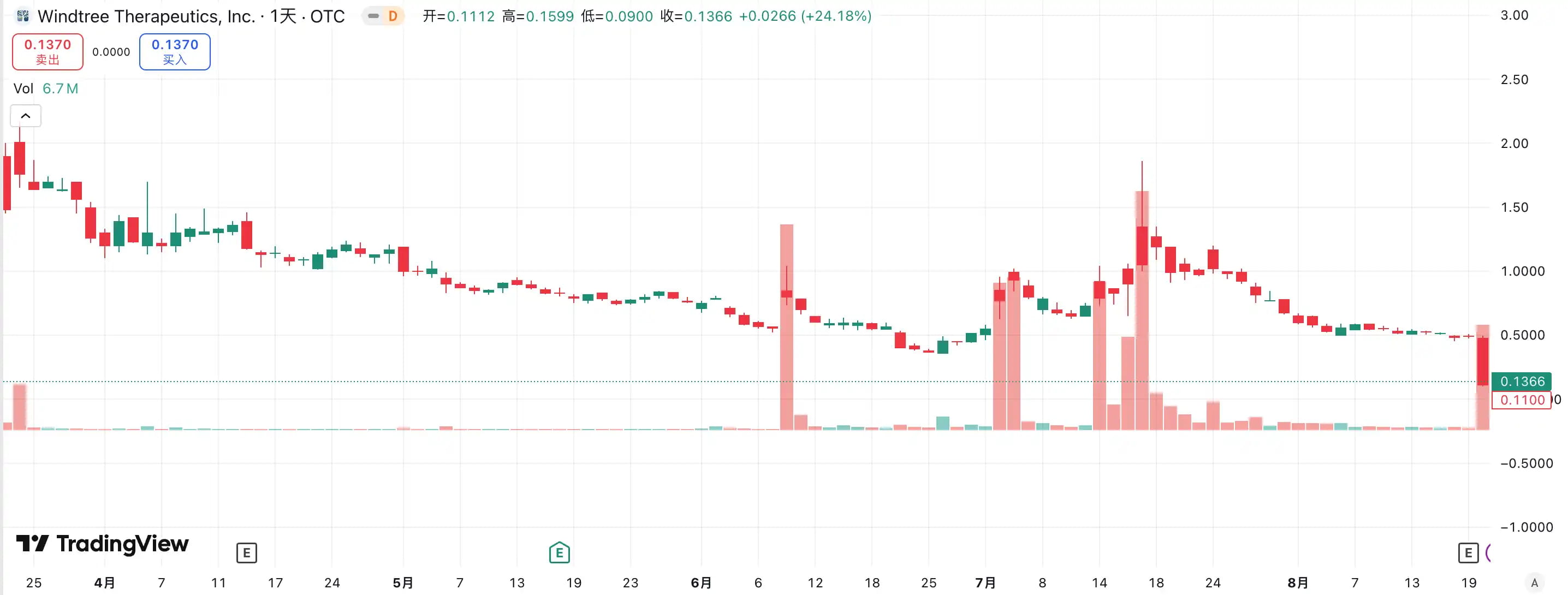
In stark contrast is another new player—BNB Network Company (BNC, formerly CEA Industries). With the support of YZi Labs, BNC completed $500 million in private placement financing from late July to early August, with CZ personally overseeing the process, and the participating institutions numbering as many as 140, including top-tier capital like Pantera Capital, Arrington Capital, and GSR. The company also invited David Namdar, former co-founder of Galaxy Digital, to serve as CEO, and former CalPERS Chief Investment Officer Russell Read to helm investment decisions, almost overnight completing the leap from traditional small-cap stocks to 'BNB orthodox treasury company'.
The choice of capital has already provided an answer: WINT became a 'discard', while BNC has emerged as the new market banner. Data shows that BNC's stock price rose 9.47% yesterday, now priced at $23.01, further solidifying its leading position in the 'BNB treasury company' track. It can be said that this competition is not only a showdown of company fundamentals but also a vote on market narratives and resource integration capabilities.
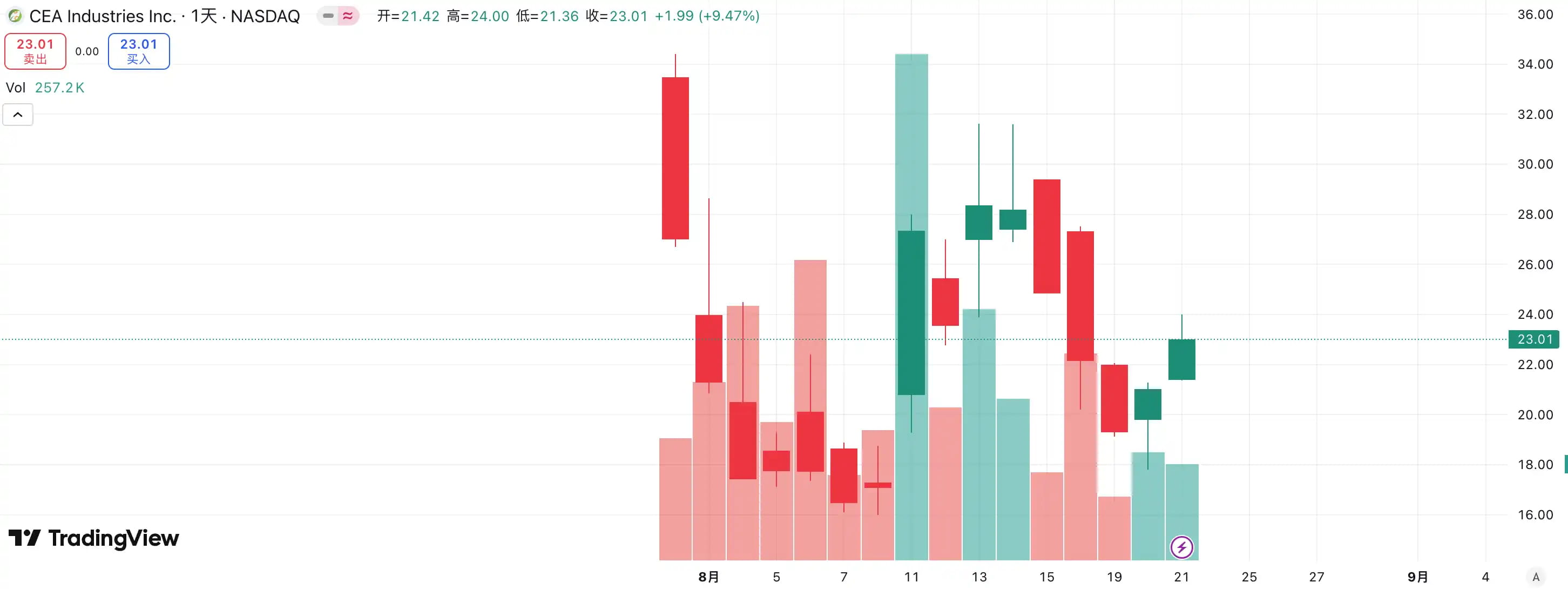
In the ETH treasury company track, competition is equally fierce. SBET, led by Joseph Lubin, was the first publicly listed company to propose the 'ETH MicroStrategy' concept. Leveraging its first-mover advantage and the narrative of ETH as an ambassador, it quickly triggered strong FOMO in the early market, skyrocketing from $3 to over $120, becoming a benchmark case of the altcoin treasury model.
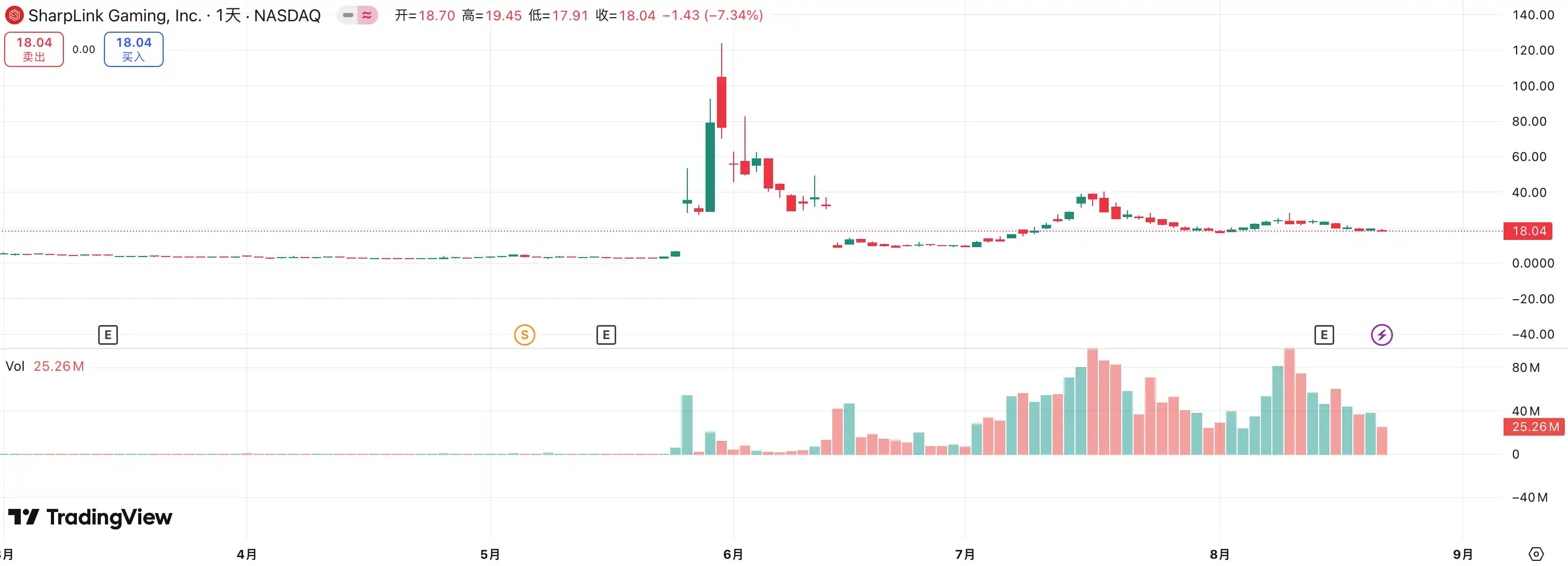
However, the rise of BMNR quickly rewrote the landscape. As a latecomer, it not only surpassed SBET in terms of buying power and capital scale but also boldly proclaimed 'holding 5% ETH', instantly elevating market imagination. More critically, BMNR is backed by the public support of Wall Street veterans like Tom Lee and Cathie Wood, quickly establishing a dominant position in institutional and media circles. In contrast, although SBET has endorsements from figures like Joseph Lubin, representative of Web3's newcomers, it is clearly at a disadvantage in terms of discourse power and influence compared to BMNR's alliance with Wall Street 'old money'.
The stock price trends of the two also confirm this divergence. In August, the stock price of SBET rose from $17 to a peak of $25, with an overall increase of about 50%; BMNR, on the other hand, surged from $30 to a maximum of $70, an increase of over 130%, significantly outperforming the former. As BMNR gradually gains recognition from mainstream capital and opinion leaders, the competitive landscape of ETH treasury companies has shown a clear shift.
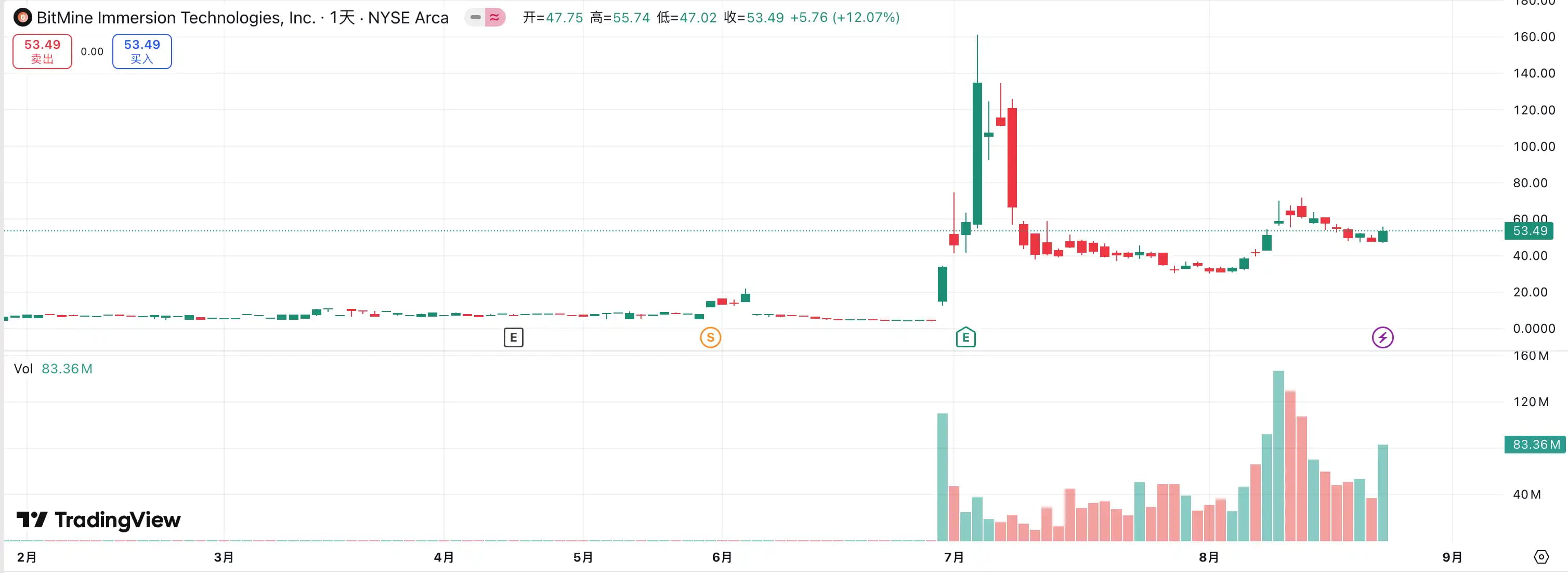
The implication behind this competition is that the 'treasury company' track has entered a phase where the strong become stronger. With the participation of institutional investors and leading capital, market resources are accelerating towards a few companies with capital integration capabilities, narrative driving force, and governance capabilities. Small companies find it difficult to survive in this model; even if they promote the 'treasury' concept, they struggle to withstand market tests of performance and capital strength. In the end, the track will only leave a few true winners capable of absorbing capital and narratives, while bubbles and followers will be quickly eliminated.
Concerns over selling coins: Strategic reserves do not equal permanent holding.
If the bull market for Bitcoin has Michael Saylor's faith backing it, the 'treasury bull' for altcoins seems more realistic. Saylor has consistently proclaimed that MicroStrategy 'will never sell' its Bitcoin and continues to buy through ongoing financing, bringing continuous buying pressure and confidence to BTC. Nevertheless, the question of 'whether MicroStrategy will sell coins' remains a focal point of market discussion. While altcoin treasury companies imitate this model, they have never provided a commitment of 'not selling', which leaves the market with greater concerns about their stability.
Recently, HYPE treasury company Lion Group Holding Ltd. was monitored selling $500,000 worth of HYPE tokens. Just a month ago, the company announced the launch of its HYPE treasury strategy after completing $600 million in financing, aiming to position $HYPE as a core reserve asset and build the next generation of Layer-1 treasury portfolios by allocating tokens like $SOL and $SUI, clearly stating that it would continue to increase its holdings of these tokens in the future. However, the current reduction in holdings has led the outside world to speculate about its asset allocation logic: is this a tactical diversification adjustment or a risk response to the recent market downturn? Although the selling scale was only $500,000, which is negligible compared to the $600 million financing, it is still worth alerting the market.
Similar examples are not uncommon. Meitu Inc. spent about $100 million to buy BTC and ETH, and then cashed out when BTC surpassed $100,000 at the end of 2024, selling at nearly $180 million, with a profit of about $79.63 million. Although Meitu is not a treasury strategy company, this operation illustrates that when the price rises to a certain level, the so-called 'strategic reserve' can completely turn into a tool for profit-taking.
Currently, there has not been a massive collective sell-off by treasury companies, but potential risks cannot be ignored. Whether driven by profit motives or fear of future market conditions, treasury companies could become sources of selling pressure. The reduction in holdings by Lion Group is a reflection of such concerns: as one of the first entrants into the HYPE treasury strategy, its sell-off undoubtedly sounds the alarm—once the 'treasury army' chooses to sell off collectively, the cascading effect may ignite instantly, and the bull market might abruptly halt under its own engine pressure.
mNAV flywheel: infinite bullets or a double-edged sword?
The financing flywheel of treasury companies is built on the mNAV mechanism, which is essentially a reflexive flywheel logic that allows treasury companies to appear to have 'infinite bullets' in a bull market. mNAV refers to the market net asset value ratio, calculated as the company's market value (P) relative to its net asset value per share (NAV). In the context of treasury strategy companies, NAV refers to the value of the digital assets they hold.
When the stock price P exceeds the net asset value per share NAV (i.e., mNAV > 1), the company can continue to raise funds and reinvest the raised funds into digital assets. Each issuance for purchase will drive up the per-share holdings and book value, further strengthening the market's confidence in the company's narrative and pushing the stock price higher. Thus, a closed-loop positive feedback flywheel begins to rotate: mNAV rises → financing through issuance → buying digital assets → per-share holdings increase → market confidence enhances → stock price rises again. It is precisely through this mechanism that MicroStrategy has been able to continuously finance and buy Bitcoin over the past few years without severely diluting its shares.

However, mNAV is a double-edged sword. A premium can represent the market's high trust but may also just be speculative hype. Once mNAV converges to 1 or falls below 1, the market shifts from 'enrichment logic' to 'dilution logic'. If the price of the token itself drops at this time, the flywheel will switch from a positive rotation to a negative feedback loop, causing a double whammy of market value and confidence. Moreover, the financing of treasury strategy companies is also built on the premium flywheel of mNAV. When mNAV remains at a discount for a long time, the space for issuance will be blocked, and the businesses of small and medium-sized shell companies that are already stagnant or on the verge of delisting will be completely overturned, and the established flywheel effect will collapse instantly. Theoretically, when mNAV is at 1, the more reasonable choice for the company would be to sell holdings to repurchase stock to restore balance, but one should not generalize; discount companies may also represent undervalued assets.
During the bear market in 2022, even when MicroStrategy's mNAV temporarily fell below 1, the company chose not to sell coins for buybacks but rather insisted on retaining all Bitcoin through debt restructuring. This 'deadlock' logic stems from Saylor's faith-based vision for BTC, viewing it as a core collateral asset that 'will never sell'. However, this path is not one that all treasury companies can replicate. Most altcoin treasury stocks lack stable core businesses, and transitioning to 'buy coin companies' is merely a survival tactic, lacking faith backing. Once the market environment deteriorates, they are more likely to sell to stop losses or realize profits, triggering a sell-off.
How to avoid potential risks of the DAT treasury model?
Prioritize companies that 'stock up on BTC'.
The current treasury model is mostly a mimicry of MicroStrategy, with Bitcoin always playing the role of 'industry cornerstone'. Bitcoin, as the only widely accepted decentralized digital gold globally, has an irreplaceable value consensus. Whether traditional financial institutions or crypto-native giants, their allocations and expectations for Bitcoin have not yet reached long-term goals. For investors, choosing 'BTC treasury companies' is often more robust and provides a greater long-term confidence premium than those merely imitating the treasury logic of altcoins.
Focus on competitive relationships and choose leading targets.
The ecological competition in the capital market is extremely brutal. Especially in narrative-driven models like treasury strategies, the market often 'only knows the first, does not recognize the second'. This can be seen from the competition between WINT and BNC; once capital and orthodox institutional support concentrate on one side, the other side will be quickly marginalized. In this context, investors should focus on the 'leader effect': the first place often receives more institutional funds, media narratives, and market trust, while the second and third places are easily overlooked.
For retail investors, if they lack sufficient judgment and grasp of individual stocks, choosing to directly allocate to the coins themselves may be simpler and more effective. The facts show that even amidst fierce competition at the company level, both ETH and BNB have reached historic highs without being affected.
Focus on company fundamentals.
One of the core issues of the DAT model is that many treasury companies themselves are 'shell companies', with their main businesses already stagnant and weak profitability, relying almost entirely on 'speculating on coins' to survive. This model may seem reasonable in a bull market, but once the market reverses, it will instantly bleed due to a lack of cash flow support. Therefore, investors must pay attention to the following when selecting targets:
Company cash flow: Does it have self-blood-generating capability?
Buying cost: Is the average holding price sufficient to maintain health during corrections?
Position ratio: Is the proportion of digital assets in the company's net assets too high?
Use of funds: Are the raised funds mainly used for buying coins, or are they for actual business expansion?
Debt repayment capability: Can it still maintain stability when convertible bonds mature or stock prices come under pressure?
Companies lacking blood-generating capabilities may seem to shine in a bull market, but when liquidity retracts, their ability to withstand risks is extremely weak, and they could easily become among the first victims of a sell-off.
Summary
The treasury strategy has undoubtedly injected the strongest fuel into this bull market, with a steady stream of off-market funds propelling altcoins led by ETH to soar. However, the more the model appears to have 'infinite bullets', the more one should be wary of the underlying bubbles and hidden dangers. History has proven that liquidity and narratives can ignite the market but cannot replace real value support. For investors, the current market is indeed optimistic, but one must remain calm and prudent. Only by maintaining rationality amid the clamor can one stand firm when the next bubble recedes.





